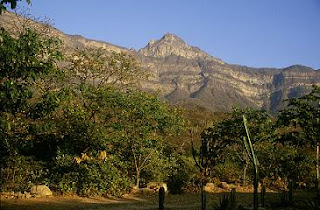In Pucullpa, you can shape clay handicrafts, take authentic iconography home with you (tattooed on your skin) and learn more about ayahuasca from the Shipibo tribe
“Magical, delightful and traditional,” “an unforgettable experience,” “a visit that must be repeated,” are some of the expressions from tourists after visiting the native community of San Francisco, located just an hour from the city of Pucallpa.
It is considered one of the most representative communities of the region (they still preserve their customs and their traditions, as well as their language). However, San Francisco offers much more than just a cultural trip, explains Giovanna Vega, General Manager of Amazon World, an agency that offers this package to travelers.
The Ancestral Route
In order to arrive at San Francisco, crossing Lake Yarinacocha is necessary. The trip takes an hour, during which you can appreciate the richness of flora and fauna that characterizes the Amazon. A group of small natives will welcome you with a song in their native tongue and they will accompany you from the port to a “maloca” (a typical residence in the area) which is developed for tourist activities which have taken place there for the past two years. It is here where you will find women with long hair and painted faces, and shirtless, barefoot men with dodgy looks and big stomachs. In this instant, you will feel that you are in another world, in the deepest part of the jungle, where time has ceased to move.
To the rhythm of the drum
While the adults play different wooden instruments that they themselves have made, the children will invite you to dance in the intense heat, which at this time, is more than 32°C. The beating of the drum marks the rhythm of the jumps, and the flutes sweeten the tone. While holding hands and forming a circle, the tribe and their visitors don’t stop laughing, as they feel they form part of a festival that climaxes in the applause of the dancers.
Original SouvenirsAfterwards you may visit Graciala Valles, a native expert in pottery that will demonstrate her talent before the astonished eyes of the visitors. The best part is the handling of the cold dough, formed from a mix of earth and water, and making your own dish and taking it home as a souvenir. Also, women may put their original designs on part of their body as well. For this temporary tattoo, which will last a few weeks, they use a natural dye with which they have dyed their hair since their ancestral times.
Mystic Adventure
The trip will continue until you arrive at the house of the Shipibo painter Alberto Muñoz, who will explain his art and the relationship that it has with ayahuasca. This artist and teacher, who holds the sessions in which one drinks from this traditional plant, explains how the community uses the ayahuasca for medicinal purposes. If you can not drink ayahuasca, when you leave this place you will know much more about its characteristics and you will have the opportunity to try it on your next visit. If you have more time, the program can include other activities such as traditional fishing, where you will have the opportunity to learn how to make arrows.
After various hours of cultural exchange, the time will come to say goodbye. Tourists usually acquire many of the handmade products of the tribe. The prices of their artwork range between 10 and 30 soles. As you board the boat, you will be surrounded by children. The spectacle will climax when they launch themselves from the raft into the deepest part of the lake.
Travelers should spend a day with the tribe, but if they so choose, they can stay living with them for up to a month.
Much More to Visit
If you are planning to go to hot Pucallpa, you can see the cathedral built in 2005, which shows off wood-work and stained-glass made by the craftsmen of Chacas, in Huaraz. Don’t forget to try a succulent patarashca or the famous juanes accompanied by a refreshing local fruit juice. And when night arrives, there is nothing better to do than enjoy a good drink in the discoteca El Perico, located just minutes away from the center. This discoteca also has a restaurant and room for 700 people.
How to Get There
From Lima there are two daily flights to Pucallpa via LAN Peru. The flight lasts 55 minutes.








